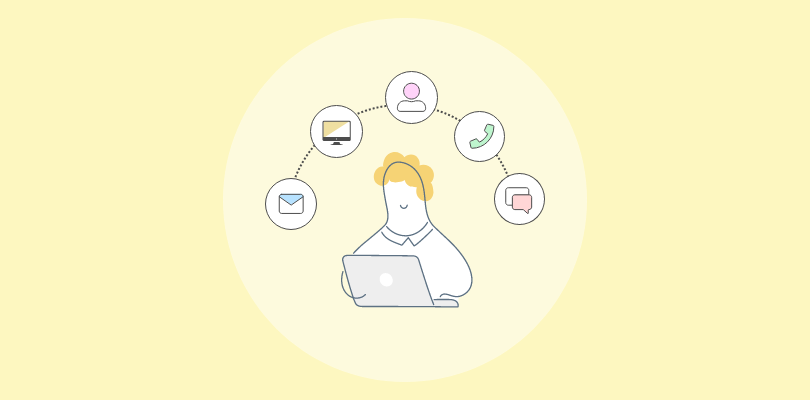Are you burning thousands of dollars in advertising your products to prospects? Are your marketing efforts falling face first?
Well, it’s time to make a big ‘U-turn’ and focus on your existing customers through customer retention strategies.
Retaining current customers is more cost-effective than acquiring new ones, as it requires less marketing and sales effort. This leads to higher profitability and business growth.
In this blog, we will understand the meaning of customer retention, explore its benefits, and uncover 8 customer retention tips to create loyal brand advocates.
To help you get started, here’s a video with expert advice on how to improve the overall customer experience:
What Is Customer Retention?
Customer retention refers to a company’s ability to keep its existing customers over a period of time. It involves strategies and actions aimed at maintaining ongoing customer relationships, reducing customer churn, and fostering customer loyalty.
Effective customer retention strategies include providing excellent customer service, personalizing customer experiences through a solid customer experience strategy, offering loyalty programs, and consistently delivering high-quality products or services.
According to research done by Frederick Reichheld of Bain & Company (the inventor of the net promoter score), a 5% increase in customer retention can increase profits by 25 to 95%.

Image Source: StriveCloud
High customer retention rates indicate customer satisfaction, trust in the brand, and a higher likelihood of repeat purchases, which ultimately contribute to increased revenue and business growth.
Why Is Customer Retention Important?
As we already discussed, focusing on customer retention can lead to higher profits. But that’s not all. Let’s explore more customer retention benefits in detail.
1. Cost-Effectiveness
Acquiring a new customer can be up to 25 times more expensive than retaining an existing one. The cost of marketing and sales efforts to attract new customers is often significantly higher compared to the cost of nurturing and maintaining relationships with current customers.
2. Increased Revenue
Loyal customers tend to make repeat purchases and are likely to spend more over time. This consistent revenue stream can significantly boost a company’s profitability and financial stability.
3. Leverage Word-of-Mouth Marketing
Satisfied customers are more likely to refer your business to others, providing valuable word-of-mouth marketing. Potential customers typically trust these referrals and can lead to new customer acquisition without additional marketing costs.
4. Improve With Customer Feedback
Long-term customers provide valuable feedback that can help businesses improve their products and services. This continuous feedback loop allows companies to make necessary adjustments to meet customer needs and enhance overall satisfaction.
5. Gain a Competitive Advantage
High customer retention rates can give a business a competitive edge. Loyal customers are less likely to switch to competitors, even if they offer similar products or services, thus helping to secure a stable market position.
8 Proven Strategies to Increase Customer Retention Rates
Now that you know how important customer retention is, how do you retain a good proportion of your customer base? Here are 8 best customer retention strategies and tips to keep them returning.
1. Build a Smooth Onboarding Process
Customer onboarding is an important stage in the customer journey that educates new customers on using your products or services better.
Since onboarding involves the first interaction after a customer has bought from you, a smooth onboarding process can set the right tone for further interactions.
Here are some top onboarding tips for your new customers:
- Highlight value: Great onboarding is an important customer retention strategy that can help prevent churn among new customers. All you have to do is highlight the value your product brings to customers and how they can best use it to solve their problems.
- Drive attention to important elements: Bring the customer’s attention to important elements within your website or app. For instance, Slack shows automated pop-up messages (tooltips) to help users understand the features better.
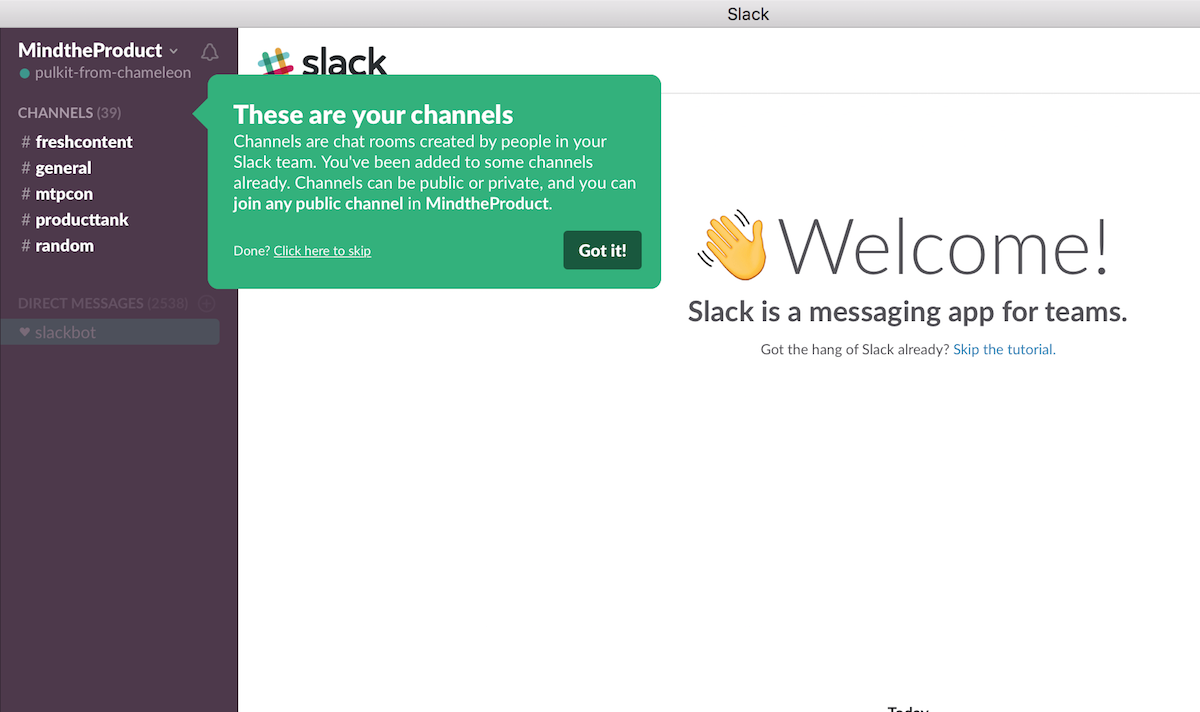
Image Source: Chameleon.io
- Offer personalized training sessions: Conduct personalized training sessions for your customers or business clients to teach them about the complexities of your product or service.
2. Automate Customer Service With Help Desk Software
Automating customer service with a help desk ticketing system is a powerful strategy for enhancing customer retention.
An efficient customer service management system streamlines support processes, ensuring timely and efficient handling of customer inquiries, which boosts satisfaction and loyalty. According to a study, a whopping 95% of customers said that good customer service is essential for brand loyalty.
Here are some key automation features you should know:
- Automated Ticket Creation and Assignment: Help desk software automatically generates and assigns tickets based on predefined rules. This ensures that customer issues are directed to the appropriate team members without delay, speeding up response times and improving overall efficiency.
- AI-Generated Responses: Typing an entire response to a customer complaint or query is a thing of the past. Thanks to AI-powered help desk systems like ProProfs Help Desk, you can leverage AI-generated responses and reply to customers in seconds. The AI can automatically scan through a message and offer you smart response suggestions.
- Self-Service Portals and Knowledge Bases: Help desk software often includes features like self-service portals and knowledge base. These resources enable customers to find answers to common questions independently, reducing the number of support requests and freeing up your team to handle more complex issues.
3. Engage Your Audience With Periodic Newsletters
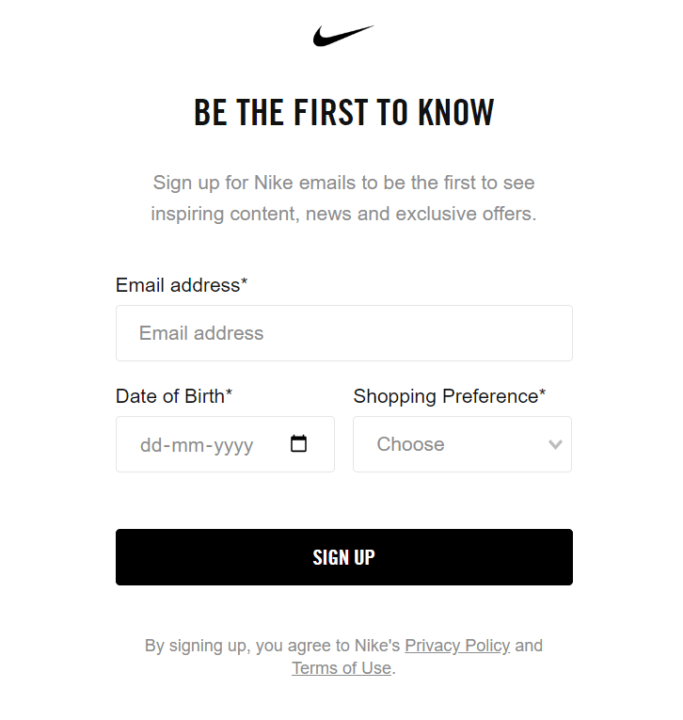
Image Source: Omnisend
Do you share newsletters with your existing customers to boost engagement and sales?
Well, if not, you should.
Newsletters are a simple and cost-effective way of reaching out to customers and marketing your products or services. You can also update customers on upcoming product features, awards and recognitions, promotions, or new offers.
By sharing exclusive content with your customers, you promote the idea that your company values them and that you are consistently improving your services and growing your business.
Sometimes, when you share offers with customers, they can bombard your inbox with product-related queries. You can use email management software to quickly track, assign, and respond to all customer queries.
4. Leverage Social Proof
Social proof occurs when customers conform to the actions of others, assuming that those actions reflect the correct buying behavior.
Social proof is a powerful tool that is often overlooked. Did you know that around 92% of online consumers look at a product review prior to making a purchase?
So rather than singing songs about how great your brand is or how perfect your products are, you can simply use your existing customers’ experience to promote your brand.
How to leverage the magical power of social proof?
- Use genuine customer testimonials on your website to convince new prospects.
- Create videos of your loyal customers and share the story of how your product is solving their problems.
- Create customer case studies and share them on your website, social media pages, or via newsletters. Here are some examples of real case studies:
How Acer uses custom fields to analyze support costs quickly. |
How MilitaryCruiseDeals uses ProProfs to communicate with overseas clients. |
How Adobe enabled its global workforce to collaborate anytime, anywhere. |
5. Make It Easier for Customers to Buy From You
If you’ve ever stood in a supermarket aisle unable to find what you were looking for, you must have wondered, “Oh lord! Why does this have to be so difficult?”
As a business, it is your responsibility to ensure that customers have a hassle-free buying experience, whether they are buying their daily milk or expensive furniture.
Here are some tips to simplify the buying process:
- Improve the checkout experience: To keep the online checkout process simple and neat, avoid distracting customers with unnecessary notifications or tabs. For retail stores, it is important to have multiple billing counters.
- Offer multiple payment options: Most customers abandon their carts when they cannot find their preferred payment option. Provide multiple payment options for both online and offline customers and consider popular digital wallets.
- Recommend complementary or related products: If the customer has not initiated the payment yet and has an active cart, you can recommend products that complement the initial product that they are looking to buy.
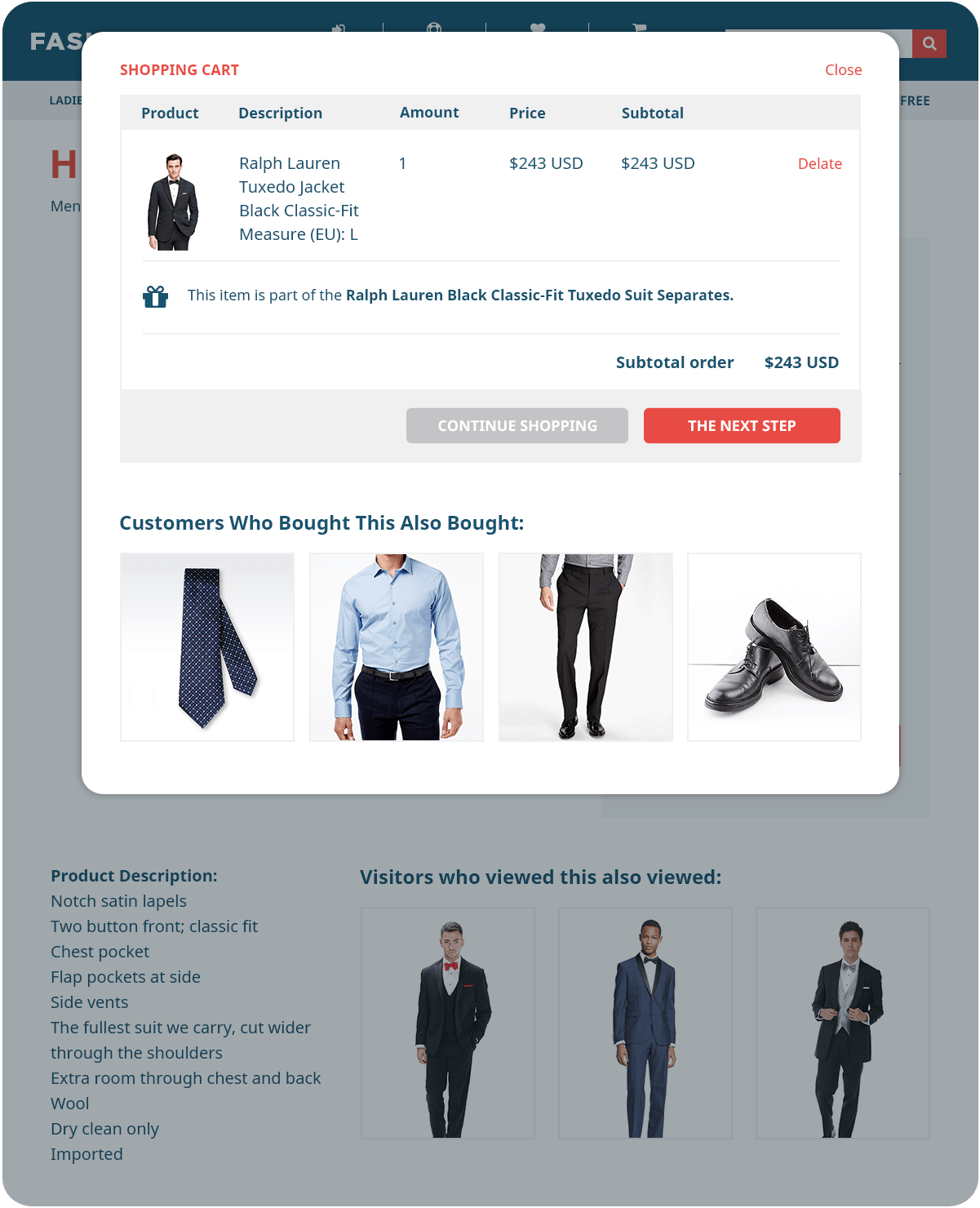
Image Source: Personyze.com
A simplified buying process will result in more sales, happier customers, and a higher customer retention rate.
6. Retain Customers With a Loyalty Program
Everyone loves being rewarded for showing their loyalty, whether it’s a customer or an employee.
A loyalty program is a proven customer retention strategy that can be vital in building long-term customer relations and loyalty.
According to a study by Accenture, more than 90% of companies offer some sort of loyalty program to their customers.
So how does a loyalty program work?
A customer loyalty program rewards customers for their continued loyalty. In simpler terms, the more a customer buys and interacts with your business, the more they’re rewarded.
For example, the brand North Face offers reward points to customers for every dollar they spend. The collected points can be redeemed for unique travel experiences, such as trekking in the mountains.
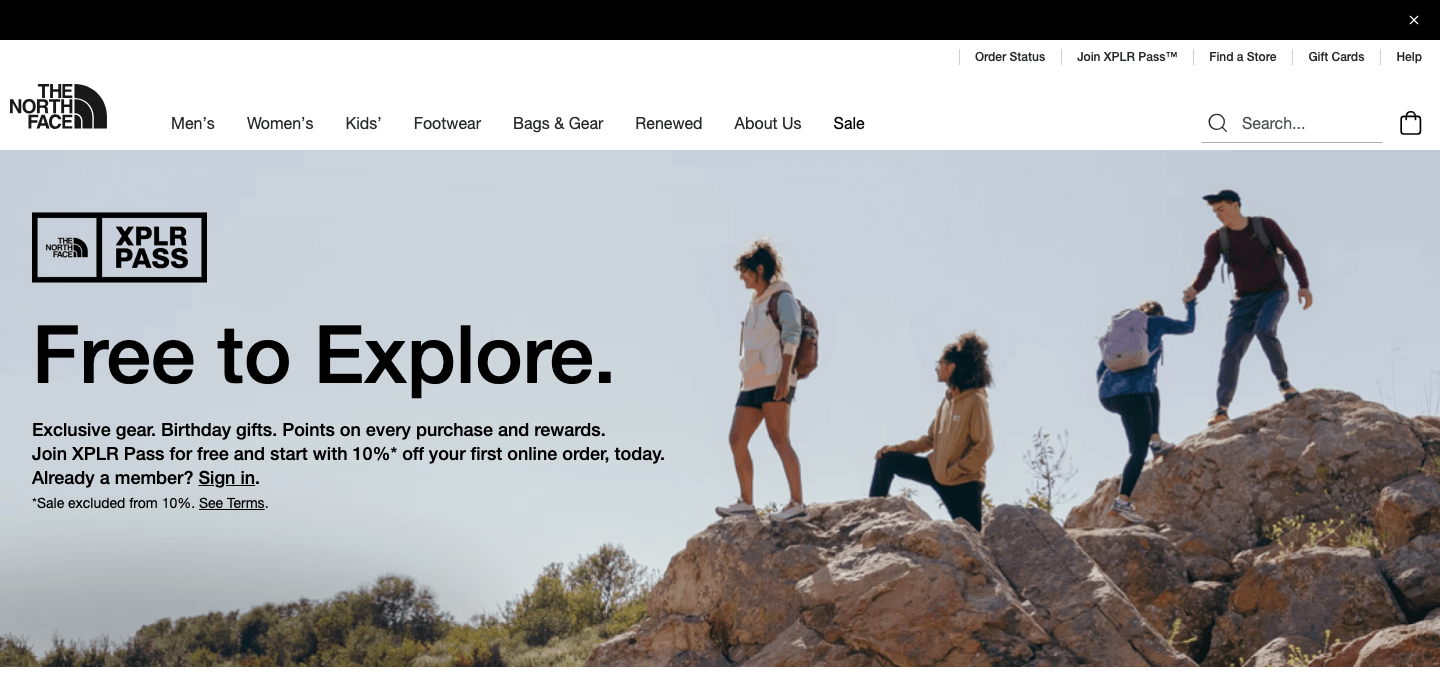
Image Source: TheNorthFace
7. Use Surveys to Become a Better Business
Listening to your customers to learn how they feel about your products and services is a great way to retain them and become a customer-focused business.
“Your most unhappy customers are your greatest source of learning.”
– Bill Gates, former CEO of Microsoft
Customer surveys can be used to capture valuable feedback, uncover pain points, and determine what needs to be fixed.
Here are some best practices to keep in mind while creating and sharing surveys:
- Start with a clear goal: It is important to know the goal behind creating your surveys. For instance, if your goal is to understand why customers are leaving, you will know which questions to include and which ones to avoid.
- Avoid lengthy surveys: Keep your surveys short, simple, and easy-to-understand. An ideal survey should have a maximum of 5-6 questions.
- Offer a survey incentive: Surveys usually have a low response rate as customers don’t see any value in it for them. They feel that their feedback will hardly make a difference to a brand that already has millions of customers. To make the feedback process more lucrative for customers, you can offer them incentives in the form of gift cards or special discount coupons.
8. See What Your Competitors Are Doing Right
Having tough rivals in the market is both a boon and a bane for any business. On one hand, you have to match their offerings, on the other hand, you also feel the motivation to improve your existing process and become a dominant player.
So how to involve competitors in your customer retention strategy?
Well, you just need to watch and learn. See what they are doing right to retain customers and pay equal attention to what they are doing wrong. For a solid competitor analysis, you can keep the following points in mind:
- Track their social media pages and see how they are using content to engage with their target audience.
- Subscribe to their newsletter to learn about new product features or offers
- Check how your biggest rivals are rewarding their most loyal customers. Are they offering exclusive offers? Are they treating them special through personalized discounts?
- See what they did wrong and avoid going the same path. For instance, if they shared their opinion on a social issue that provoked customers, avoid doing that at all costs.
These tips will help you learn from the best in the business.
3 Customer Retention Examples From Popular Brands
Successful brands know how to retain customers to take their business forward. Here are 5 customer retention examples to inspire you:
1. Canva Shares Knowledge With Customers

Image Source: Canva
To retain your customers, just offering your product or services to customers is not enough. To foster a strong bond, it is important to be a part of their overall learning process and improve their lives.
Canva does an excellent job of providing customers with educational content that can eventually help them become better designers or artists. The Canva Design School was launched with the objective of creating courses, how-to guides, and video tutorials to help customers use its product better and hone their skills.
2. Uber Has Mastered the Customer Feedback Loop
Collecting customer feedback is one thing and incorporating it into your business process is another. Uber, the popular ride-hailing app, has successfully created a feedback loop that benefits both customers, drivers, and eventually the company.
Customers can rate their drivers after completing the ride. The company captures this feedback in real-time and gives a rating to the driver. This simple yet constant feedback process has allowed Uber to identify and eliminate problem drivers to improve the customer experience.
3. Nike Excels at Social Media Customer Service
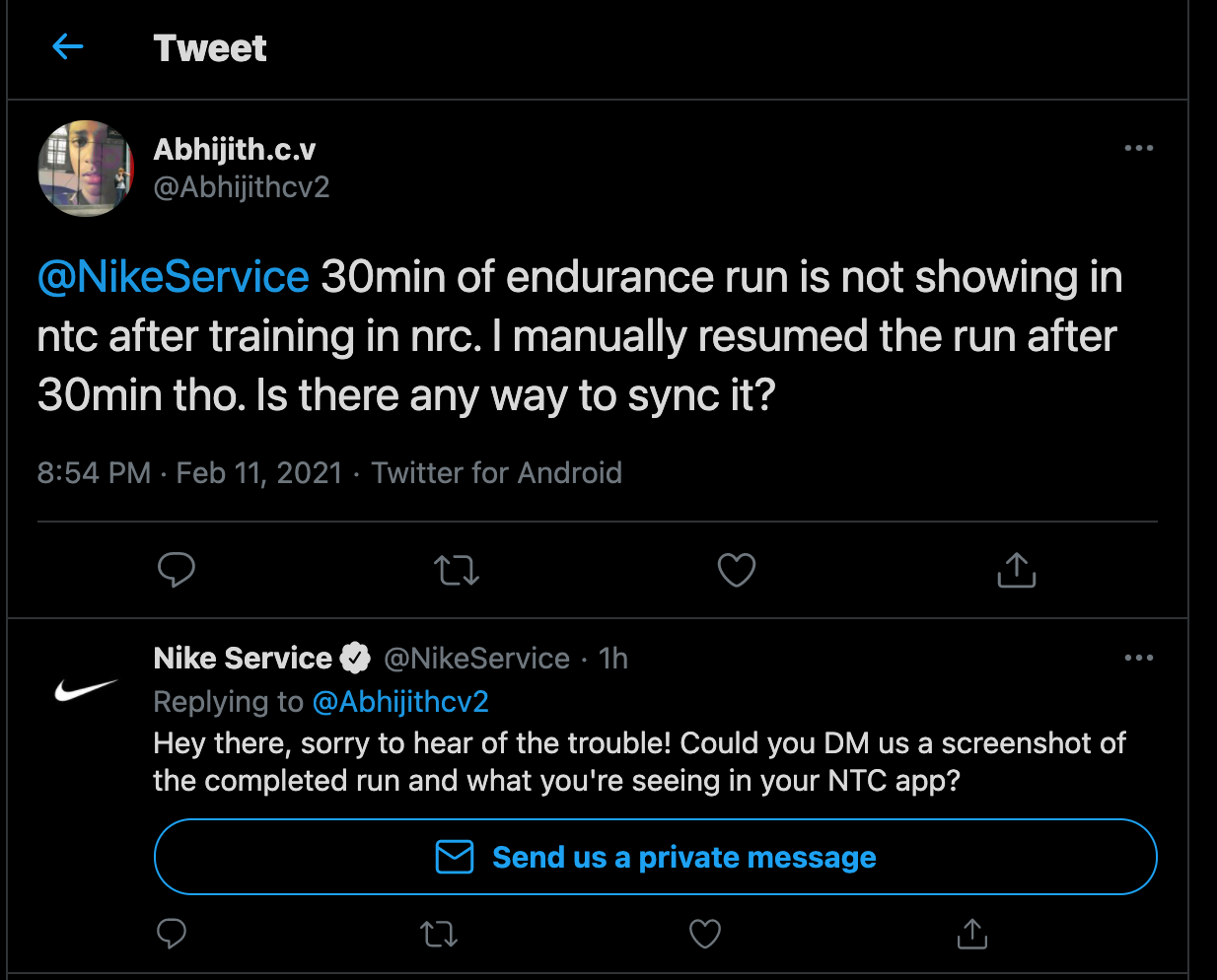
Image Source: Statusbrew.com
A single negative online review can scare away potential customers and make existing customers doubt their decision. Modern brands have realized the potential of social media to offer quick assistance to customers and save their business from a bad reputation.
A great example is Nike, which undoubtedly has one of the strongest customer service accounts on “X” (formerly Twitter). The brand is quick to follow up with customers who have had a negative experience or are looking for immediate assistance.
FREE. All Features. FOREVER!
Try our Forever FREE account with all premium features!
How to Calculate Customer Retention Rate
The customer retention rate is the percentage of customers who were loyal to your business over any given period of time.
To calculate customer retention rate (CRR), you first need to decide the time period for which you want to measure, and then identify the following:
- Number of customers at the start of the given time period
- Number of customers at the end of that period
- Number of new customers added over the duration of that period
Once you have identified all these factors, it’s time to use the below formula:

The Biggest Challenges in Customer Retention
Retaining customers is vital for any business’s long-term success, but it comes with its own set of challenges.
Understanding these challenges can help businesses develop effective customer communication management strategies to keep loyal and satisfied customers. Here are the top three challenges to customer retention:
1. Competition and Market Saturation: In today’s market, customers have numerous options available, making it easier for them to switch to competitors if they are not fully satisfied with your products or services. Keeping customers loyal requires constant innovation and differentiation to stand out from the competition.
2. Changing Customer Expectations: Customer expectations are continually evolving, influenced by technological advancements and changing market trends. Businesses must stay agile and continuously adapt their strategies to meet these shifting expectations. Failing to do so can result in customer dissatisfaction and increased customer churn.
3. Inconsistent Customer Experience: Providing a consistent and high-quality customer experience across all touchpoints is critical for retention. Inconsistencies in service, product quality, or communication can erode trust and drive customers away. Ensuring a seamless and reliable experience requires ongoing effort and coordination across various departments and channels.
Use Customer Retention Tips to Drive Loyalty & Growth!
Every business should make a conscious effort to re-engage with customers to reduce churn, increase profits, create a loyal customer base, and get more prospects attracted to your business.
Ensure your customers get a seamless onboarding experience and are constantly educated about using your products and services better. Aspects like loyalty programs, social proof, and regular surveys can give wings to your customer retention plans.
If you try any of these strategies, don’t give up simply because you don’t see quick results. Remember, all great things take time!
If you wish to retain your customers with awesome support, invest in a tool like ProProfs Help Desk. You can track all queries and complaints in one place, leverage AI to respond to customers faster and improve your service with smart reports.
 Tips
Tips
We’d love to hear your tips & suggestions on this article!
FREE. All Features. FOREVER!
Try our Forever FREE account with all premium features!

 We'd love your feedback!
We'd love your feedback! Thanks for your feedback!
Thanks for your feedback!



